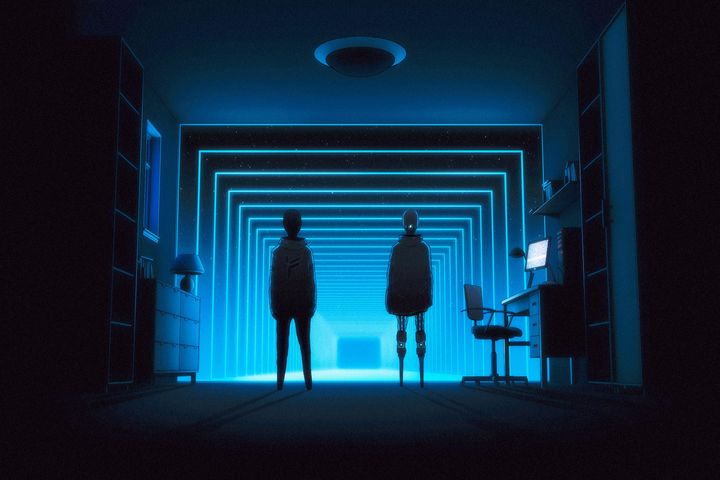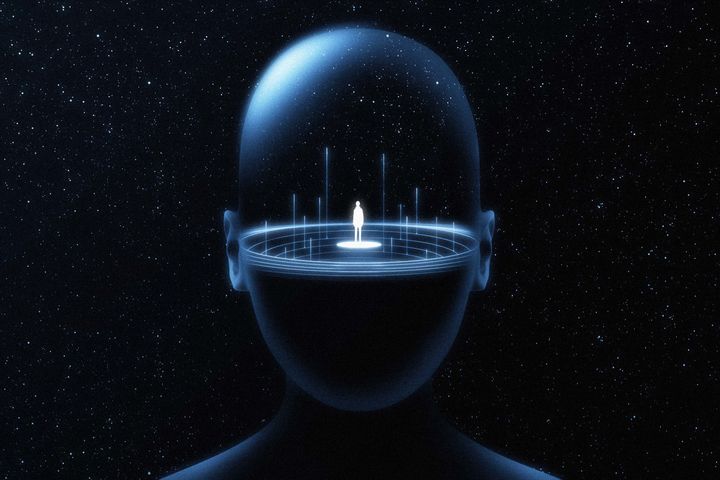
The idea of the concept album has been heavily debated since its origins in the 1940s. The one commonality, however, is the belief that a concept album revolves around a single underlying theme or motif for the entirety of the album. From Frank Sinatra and Woody Guthrie, to the contemporary rock operas of The Who and Pink Floyd, concept albums have been heralded as some of the most important works for any artist in their given genre. Not only do concept albums generally contain thought-provoking thematic material, but they are often known to be sonically exceptional from start to finish. When it comes to electronic music, it almost seems expected that the thematic nature of any concept album would revolve around science fiction. For his newest album, Blueprint, Ferry Corsten wanted to shift the idea around, and teamed up with screenwriter David H. Miller to shed light on humanity’s place in the universe and reflect on our own existence.
Ferry had been openly discussing his ideas for a science-fiction concept album for some time, but had never taken the first step.
“My dad and I were listening to some of the new Gouryella (an old alias I re-launched last year) music and we were talking about how much storytelling it actually had. This was when my dad said 'why don't you take that next step and create the story album you always wanted to make? Remember Jeff Wayne's War of The Worlds?’ That was my 'aha' moment.”

Corsten's had an appreciation for film scores, and wanted to produce a work that transcended lyrically oriented music, but could still tell a strong story. Creating a collection of songs, that combined itself with a theatrical narration, could help expand on this dream. Thankfully enough, Ferry’s manager happened to be old friends with screenwriter David H. Miller (House of Cards, Rosewood), and suggested the two meet for a potential collaboration. Before you knew it, the two were together and the ideas were flowing. David spoke highly of the pair’s first meeting. “We hit it off as soon as we sat down and the ideas came fast and furious. It was honestly the smoothest collaboration I have ever been a part of.”
The story evolved from a basic idea about artificial intelligence and extraterrestrial life. These were fitting themes for a genre of music often described as sounding like circuitry, or alien sounds. The base narrative of the album is the tale of an ominous sound echoing from the cosmos that translates to an interstellar blueprint for our small-town protagonist longing for something greater: Lukas. As he builds the creation that this echoing drum beat commands, he soon realizes that the blueprint was for an android; an antenna for the consciousness of a far-away being known as Venera (Vee). Their relationship evolves as Vee spends her time learning about Earth from Lukas, and soon shows him how to expand his consciousness across the cosmos to experience her home-world. But Vee’s curiosity grows as quickly as his fondness for her, and soon the pair find themselves struggling with their expanding desires.
The story was shaped by a lecture that Miller happened to attend at the Smithsonian, on science fiction concepts in the real world by physicist Michio Kaku.
“The way he described the ‘reality’ of teleportation ended up being a lot like the film The Prestige; a consciousness is teleported, but the body stays behind (although in the case of that film (and Kaku’s theory) -- SPOILER ALERT -- the process is more like a duplication; two bodies/two minds are created) I fell in love with that idea of unbounded consciousness, because it had a sort of poetry to it, and it allowed room for one to believe in the soul. Once Ferry and I had narrowed down that we wanted to tell a story about artificial intelligence and extraterrestrial life, I thought back to that Kaku lecture and came up with this idea.”

The music itself is saturated with emotion and intensity. Corsten’s compositions compliment the existential and introspective nature of the theme, and are a brilliant accompaniment to Miller’s words. Each song lends itself into the next as the narrative progresses. The introduction to the album, “Reception,” is simply a heartbeat-like kick drum thumping through the silence, with an ominous piano melody crawling along in the background. Our narration begins:
“It begins… with a sound, echoing from the depths of space...”
Immediately following the final words of “Reception” is the first traditional track of the album, entitled “Blueprint.” A steady, deep, and pinpoint kick drum carries the beat as a crunchy sawtooth bassline drones in the background. Industrial snares and hihats are added piece by piece until percussion drops out entirely, and nothing but a stepping melody cuts through the emptiness; built upon just enough reverb that it brings with it astronomical vastness. “Blueprint” is an ideal introduction to Corsten’s cinematic masterpiece.
From here, the album progresses track by track, explaining our protagonist’s relationship with his newly built android friend Vee, and their mutual discovery of things they’d been longing for. Our next moment of intensity is Vee’s attempt to explain how her consciousness came to reach his world, through the song “Here We Are.”
This is one of the few songs on the album that abandon trance music’s common formula of swelling synths and a driving four-on-the-floor drum pattern. Built as more of an R&B ballad with a hint of trap and future bass, “Here We Are,” is one of the most alluring and immersive tracks on the album. The rounded chords that form the backbone of the track are accentuated with airy reverb and pitch bend affecting singer Haliene’s entrancing vocal contributions. The atmospheric mix of the song perfectly encapsulates the feeling of Lukas and Vee’s intergalactic travel through the expansive and vast setting of space.
The album’s climax takes place within the final four tracks, bringing our story to a close and describing the fate of our protagonists. The outstanding track of this grouping is the epic “Reanimate.” Featuring the angelic and powerful vocals of Clairity, the song is a stunning orchestration that touches on a variety of sounds, emotions, and melodies. There’s a piercing chirp, heavily rounded and delayed, that introduces us to the track. Joining in soon are the epic drums, much like those that would welcome gladiators to the massive coliseums of the past. There’s a wholeness to the song that shifts the emotion of the album from longing and searching, to hope, elation, and completeness. The effected vocals that bask in the spotlight of “Reanimate” offer a brilliant addition to the massive composition.
Ferry Corsten’s Blueprint is a display of the artist’s mastery of the trance genre. As he manipulates emotion with every track, he tugs at the heartstrings of the listener in a way that truly embodies the ethos of trance itself. The orchestration, paired with David H. Miller’s brilliant
